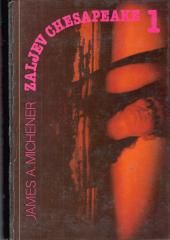
Zaljev Chesapeake
An epic novel that traces the history of the eponymous bay on the east coast of the United States from the 16th century to the 1970s. Through generations of family and historical events, Michener explores man's relationship with nature, social change, and
The story begins with the arrival of the Susquehannock Indians in the region, depicting their harmony with nature. With the arrival of Europeans, including English colonists and the Jesuit John Bertrand, a clash of cultures and exploitation of the land begins. The novel follows the Paxmore, Steed, and Cater families through the centuries, intertwining their fates with historical events such as colonization, slavery, the Revolutionary War, the Civil War, and industrialization.
Key themes include the impact of colonialism, racism, environmental degradation, and the struggle for justice. The Paxmores, Quakers, are distinguished by their fight against slavery, while the Steeds represent the planter elite. The Caters, descendants of slaves, symbolize resistance and the desire for freedom. The Chesapeake Bay, as a central motif, reflects environmental changes caused by human activity, such as pollution and overfishing.
Michener's style is rich in detail, blending fiction with historical fact. The novel ends in the modern era, contemplating the future of the region and the preservation of its natural resources. Through a story of families and the bayou, Michener paints a complex picture of American history, emphasizing the interdependence of people and nature.
The book consists of two volumes.
Jedan višetomni primjerak je u ponudi.







